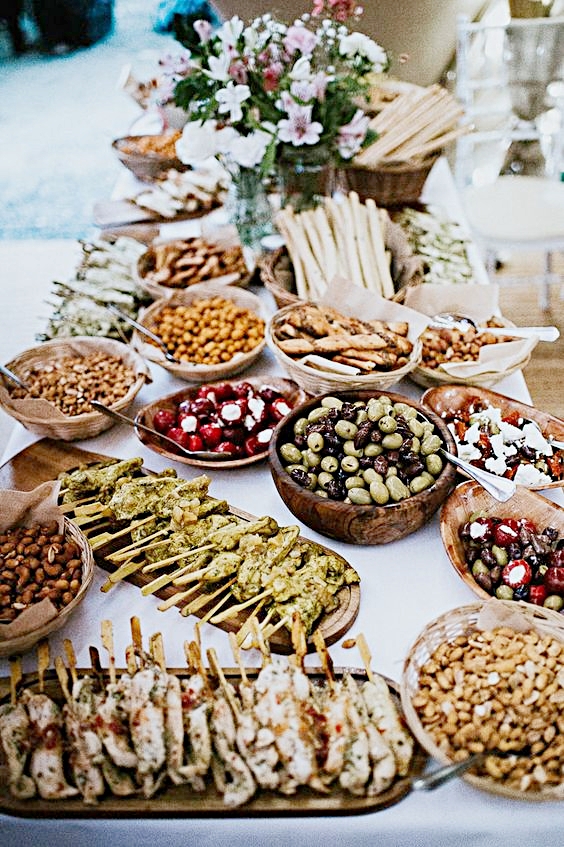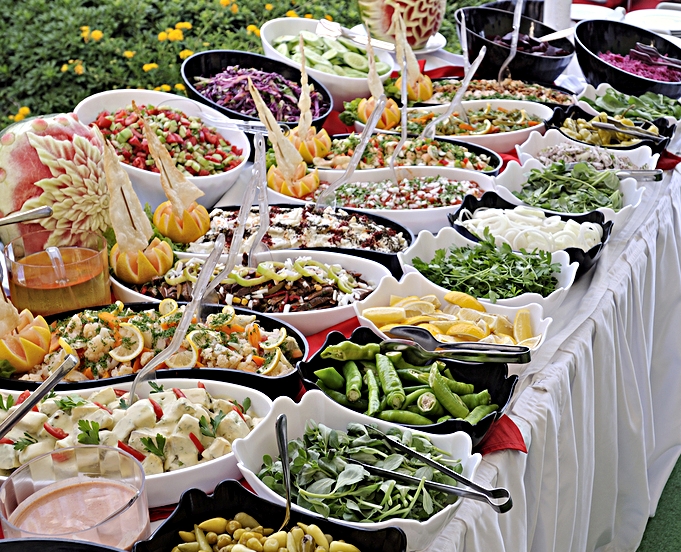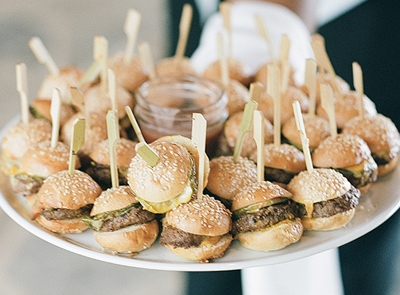BON APPETIT! WEDDING DINNER STYLES MADE SIMPLE
Hey there, Sparklers! I think we can all agree that everyone loves party food. Of course, your wedding reception is no exception. When it comes to picking the menu for your wedding, how you then choose to serve it will depend on how many guests you are serving, the level of formality, and your budget. The most popular service options include buffet, family-style, stations, plated, and heavy hors d’oeuvres. As you consider your personal style and what you think your guests will like, check out our rundown of these different service options to find what is best for you!
PLATED
A plated meal is the most traditional type of service at weddings. Typically three or four courses (usually an appetizer, a meat or fish for the main course, and a dessert), guests are usually given a limited number of options per course. This is the most formal meal option, and is great for those who want a more refined atmosphere. You also can ensure that all guests are served at the same time. One drawback of this option is that it makes it more difficult to cater to guests with dietary restrictions. For costs, you will save on food, especially compared to less formal options like family style, since the amount of food needed is predetermined and will not vary from guest to guest. That said, more servers will be needed than with other services. Don't forget, you will need to obtain your guests' meal selections ahead of time, and provide catering staff with place cards and a seating chart indicating meal type.
BUFFET
Buffets are a crowd favorite, and a less formal alternative to your traditional plated service. This option lets guests interact with others beyond their assigned table. However, beware of lines and larger food costs, since guests tend to eat larger portions when serving themselves! In addition to allowing guests to mingle, another advantage of buffet-style is that it is easier to provide a larger variety of food than with plated dining.















